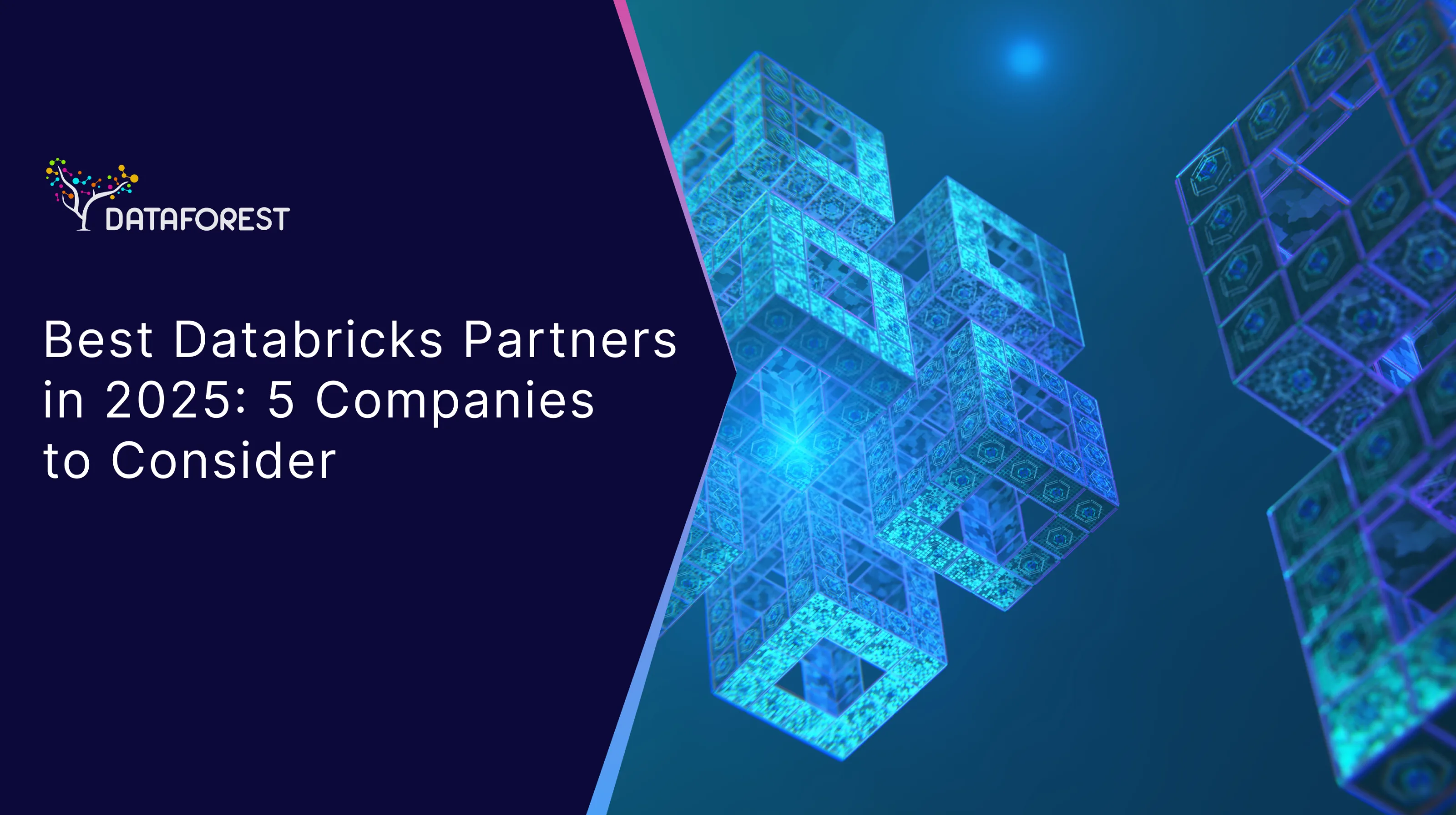Databricks Architecture: Unified Data Control
Build AI that actually works using Databricks. From data migration and pipeline automation to LLM-powered analytics & AI agent integration, our team of 100+ engineers builds scalable, cloud-native environments. We've spent 18 years debugging data systems, so DATAFOREST makes enterprise-grade AI that works available to growing businesses.






Enterprise Databricks Solutions

Migrate your workflows to Databricks with full automation in 3 weeks
Databricks Architecture Solves the Broken Data & AI Stack
AI/ML Models Stuck in Development Phase
- Data pipeline automation built on Databricks architecture feeds clean, real-time data straight to self-retraining models without manual ETL.
- Deploy production models in days by removing the data prep bottleneck with Databricks consulting services.
- MLflow integration within Databricks' architecture tracks experiments and ensures dev models work.
Digital Silos Blocking AI Innovation
- Databricks architecture consolidates all sources—databases, streams, files—into one queryable platform.
- Real-time ingestion within Databricks architecture means your models never train on stale data.
- Single lineage accelerates training cycles by 10x and eliminates rebuild loops with support from Databricks consulting services.
Slow Traditional Analytics Limiting Business Decisions
- Databricks Delta Lake performance enables sub-second queries on petabytes of data without ripping out your infrastructure.
- Streaming analytics within the Databricks architecture tackles data as it lands instead of waiting for nightly batch windows.
- Auto-scaling clusters absorb traffic spikes on their own without humans babysitting, backed by Databricks consulting that knows what it's doing.
No Single Place to Run AI/ML and Analytics
- Databricks architecture provides a single workspace connecting data engineering, analytics, and Databricks ML—one codebase, one lineage.
- Automated Databricks feature store management keeps dev and production models from drifting.
- A collaborative environment designed by Databricks consulting services reduces handoff friction so models ship instead of rotting in review.
Manual MLOps Bottleneck
- MLflow on Databricks architecture automates model iteration, shipping to production, and catching failures before they blow up your dashboards.
- Continuous evaluation built into Databricks' architecture catches model degradation before metrics collapse.
- A/B testing validates production performance with statistical rigor—an essential best practice recommended by Databricks consulting services.
Limited Self-Service AI Capabilities
- Natural language queries let anyone—SQL or no SQL—dig into predictions and get answers without pestering the analytics team.
- AutoML templates built within Databricks architecture reduce model building from weeks to days for standard Databricks architecture cases.
- Pre-built frameworks from Databricks consulting services accelerate common problems—churn prediction, demand forecasting, catching when things go sideways.
The Databricks Lakehouse Case
Healthcare Lab Modernizes Data Infrastructure with Databricks Automation
- Migrated legacy pipelines from SQL Server to Databricks in approximately 4 weeks
- Adopted a Medallion (Bronze/Silver/Gold) architecture for governed data management
- Unified 21 data sources and launched 3 LLM-powered Genie spaces
- Ensured full HIPAA compliance with auditable lineage
- Faster reporting, audit readiness, and AI-ready analytics
- 50% reduction in compute costs with Databricks’ pay-per-use model

Why Clients Choose DATAFOREST for Databricks Data Migration
DATAFOREST got us off the ground really quickly, and they even provided documentation without us having to ask for it—that was really impressive.”
Databricks Architecture Technologies


.svg)




Databricks Architecture Technical Capabilities
Your infrastructure breaks under AI workloads because data, models, and pipelines run separately. Databricks architecture consolidates them—one platform handles training, inference, monitoring, and compliance without rebuilding. Our Databricks consulting services ensure seamless implementation, optimization, and ongoing governance.

- Bronze/Silver/Gold layers separate raw ingestion from model-ready data without rebuilding under Databricks architecture.
- Delta Lake transactions guarantee consistency when models train and infer simultaneously.
- Schema evolution runs without downtime as model requirements change—an advantage supported by expert Databricks consulting services.
.svg)
- ML flow handles versioning, deployment, and automated retraining without manual gates.
- Drift detection catches model decay before metrics collapse in production—an approach perfected by Databricks consulting services.
- A/B testing validates new models statistically before full rollout across your Databricks architecture deployment.

- Structured streaming processes data on arrival with sub-second latency for fraud detection, alerts, and personalized recommendations.
- Exactly-once guarantees prevent duplicate processing in mission-critical systems designed with Databricks consulting services.
- Auto-scaling absorbs traffic spikes without ops teams manually adjusting clusters.

- AutoML finds the correct algorithm and parameters without manual experimentation loops.
- Automated feature engineering generates candidates from raw data automatically in the Databricks architecture.
- Pre-built templates reduce development time from months to weeks for standard problems.
.svg)
- Natural language queries handle business logic without requiring SQL knowledge using Databricks' architecture interfaces.
- Anomaly detection runs automatically on new data, alerting users before issues appear on dashboards—thanks to Databricks consulting services integrations.
- A collaborative workspace keeps the technical and business context together in one place, unifying users through Databricks' architecture.

- Query data across clouds without movement—combine sources in one federation through Databricks architecture.
- Deploy models identically across providers; performance stays consistent under Databricks architecture.
- Delta Sharing handles secure collaboration between organizations without copying data—streamlined via Databricks consulting services.
Databricks Architecture Solution Deployment Process



.svg)
.svg)



Build a future-ready data architecture on Databricks.
Articles Related to Databricks Consulting Services
All publicationsQuestions on Databricks Architecture
Let’s discuss your project
Share project details, like scope or challenges. We'll review and follow up with next steps.


.svg)








.svg)
.svg)
.svg)



.svg)




.svg)


.svg)

























